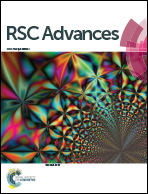Organoantimony and organobismuth complexes for CO2 fixation
Abstract
The utilization of organoantimony (bismuth) complexes in CO2 fixation is reviewed in this article. The efficient synthesis of cyclic carbonates from CO2 and epoxides over an organoantimony(V) catalyst was first reported in 1979. After that, several organoantimony(V) complexes were found to be active for CO2 fixation. In 2009, an organoantimony(III) complex was reported as an effective CO2 absorbent and it is the only example of this kind. The study of organobismuth complexes for CO2 fixation started in 2008, and the achievements are: (i) when organobismuth oxides, hydroxides and methoxides are used as CO2 absorbents, they are converted to carbonates, and the organobismuth carbonates can be renewed as organobismuth oxides; (ii) organobismuth complexes can be used as catalysts to transform CO2 into epoxides as cyclic carbonates at room temperature in the presence of a co-catalyst such as LiI and Bu4NI; (iii) there is the development of bimetallic organobismuth complexes that show cooperative catalytic action; (iv) there is the physical fixation of CO2 by inorganic–organic bismuth complexes; and (v) CO2 insertion into the Bi–C bond of an organobismuth complex is disclosed. Most of the above catalytic systems can be considered as “electrophile–nucleophile”. In general, the synthesis of cyclic carbonates from CO2 and epoxides catalyzed by an organoantimony (bismuth) complex follows the mechanism: the complex first reacts with CO2 to form an organometallic carbonate, then the carbonate reacts with an epoxide with ring-opening by a base (e.g., n-Bu4NI).


 Please wait while we load your content...
Please wait while we load your content...